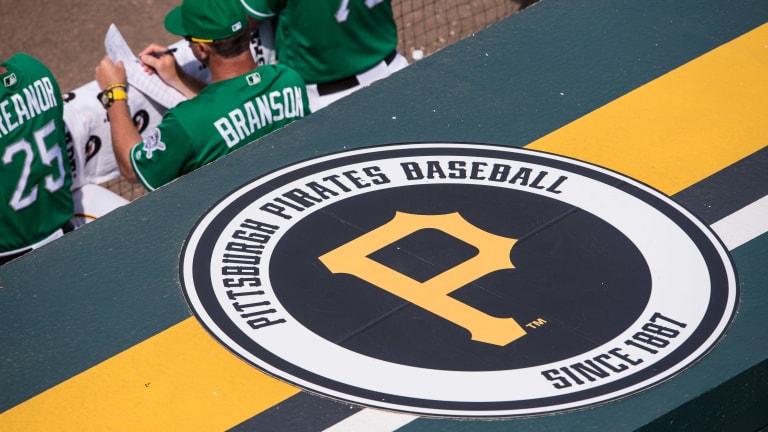
Pirates' Prospect Spotlight: Blake Cederlind
The Pittsburgh Pirates may be getting some “relief” for their bullpen and it is coming from a little bit of an unexpected place. Blake Cederlind, currently the Pirates 28th-ranked prospect, was somewhat of a surprise addition to the 40-man roster at the deadline to protect eligible players from the Rule 5 Draft. The 6’3” 190-pound right-handed pitcher out of California came from out of nowhere this season. In order to find out how Blake made it to this point, we have to take a look back to where he has been.
Cederlind was originally drafted by the Minnesota Twins in the 22nd round of the 2015 MLB amateur draft from Merced College. He opted not to sign with the Twins and instead returned to college for his sophomore year. He gambled on him self and it paid off as he was drafted in the 5 round of 2016 draft by the Pirates. After being drafted he was assigned to the Bristol Pirates, the Rookie-Level Affiliate of the big-league club in the Appalachian League.
Blake’s introduction to professional ball was less than impressive. It wasn’t bad, but it wasn’t great. In 6 games started and 17 innings he struck out 14 batters, but walked 7; while posting a 4.67 ERA and a 1.44 WHIP. The next year he played exclusively for the West Virginia Power (Low A affiliate of the Pirates from 2009 to 2018). He struggled mightily for the duration of season and was eventually transitioned from a regular starter to a relief role. For the year he pitched 58 innings, starting 7 games. His ERA swelled to 7.76 and his WHIP rose to 1.74. He continued to strike out batters at a steady clip (55), but continued to struggle with control (34 walks).
The next year, 2018, he stayed in Low A with the Power to begin the year. After significant improvement (2.86 ERA, 36K/9BB and a 1.06 WHIP), Cederlind earned his promotion to the Bradenton Marauders (Pirates High A) in the Florida State League. Once again he experienced difficulties. The rest of the year was a bit of a nightmare. His 7.59 ERA was terrible, his 18K/19BB was worse and his 2.11 WHIP was unacceptable. It was very difficult to project how his 2019 season would turn out.
His stay in Bradenton was short-lived, only 7.2 innings in 7 games. His strike outs improved (8), but his walks didn’t (8). He was promoted to the Altoona Curve (AA) nonetheless. At this point something just clicked. Over the next 45 innings (31 appearances) he struck out 42, while only walking 16. His ERA dropped to an elite 1.77 and his WHIP was 1.03. Toward the very end of the season due to performance and also injuries at the AAA and MLB levels he was promoted to the Indianapolis Indians (AAA). In a small sample size he began to struggle again, but this is almost always to be expected when you jump two levels in one year. He pitched only 6 innings. His stat line was a 7.50 ERA, 5K/2B and a 2.17.
In spite of his disappointing performances in AAA, but more than likely because of his impressive stint in AA with the Curve, Blake was assigned by the Pirates to the Peoria Javelinas of the Arizona Fall League. In this league he would face many of the top players in Minor League Baseball. In minimal action (8.0 innings pitched) he allowed only 1 run (1.13 ERA) and struck out 9 batters. And now, after a less than direct route, Blake Cederlind has been added to the 40 man roster. Along with this designation he has earned an invitation to Pirate City in the Spring and a nice little pay bump, but more importantly he has earned an opportunity.
The Pittsburgh Pirates bullpen had an overall ranking of 23 out of 30 teams per FanGraphs; with a 4.91 ERA and a near league leading 4.37 walks per 9 innings. To say they struggled this year would be an extreme understatement. They were decimated by injuries and misfortune, resulting in many call ups from AAA and some additions from outside the organization. If this season is anything like the last it would bode well for Cederlind and his chance to make an impact for the big-league club. There are really no major obstacles to his ascension to the Pirates as a contributor other than his inconsistency in the minors and his inability to establish a reliable secondary pitch. His fastball is rated as near elite with a score of 70 out of 80, as he is now hitting triple digits on a consistent basis.
With all that being said the most likely scenario for Blake Cederlind’s 2020 is limited innings at Pirates’ Spring Training in Bradenton; followed by a full year with the Indianapolis Indians in AAA to hone his skills as it pertains to sequencing pitches, tightening up his breaking ball (more than likely his slider) and finding the strike zone on a more consistent basis.
Follow Craig on Twitter: @BucsBasement